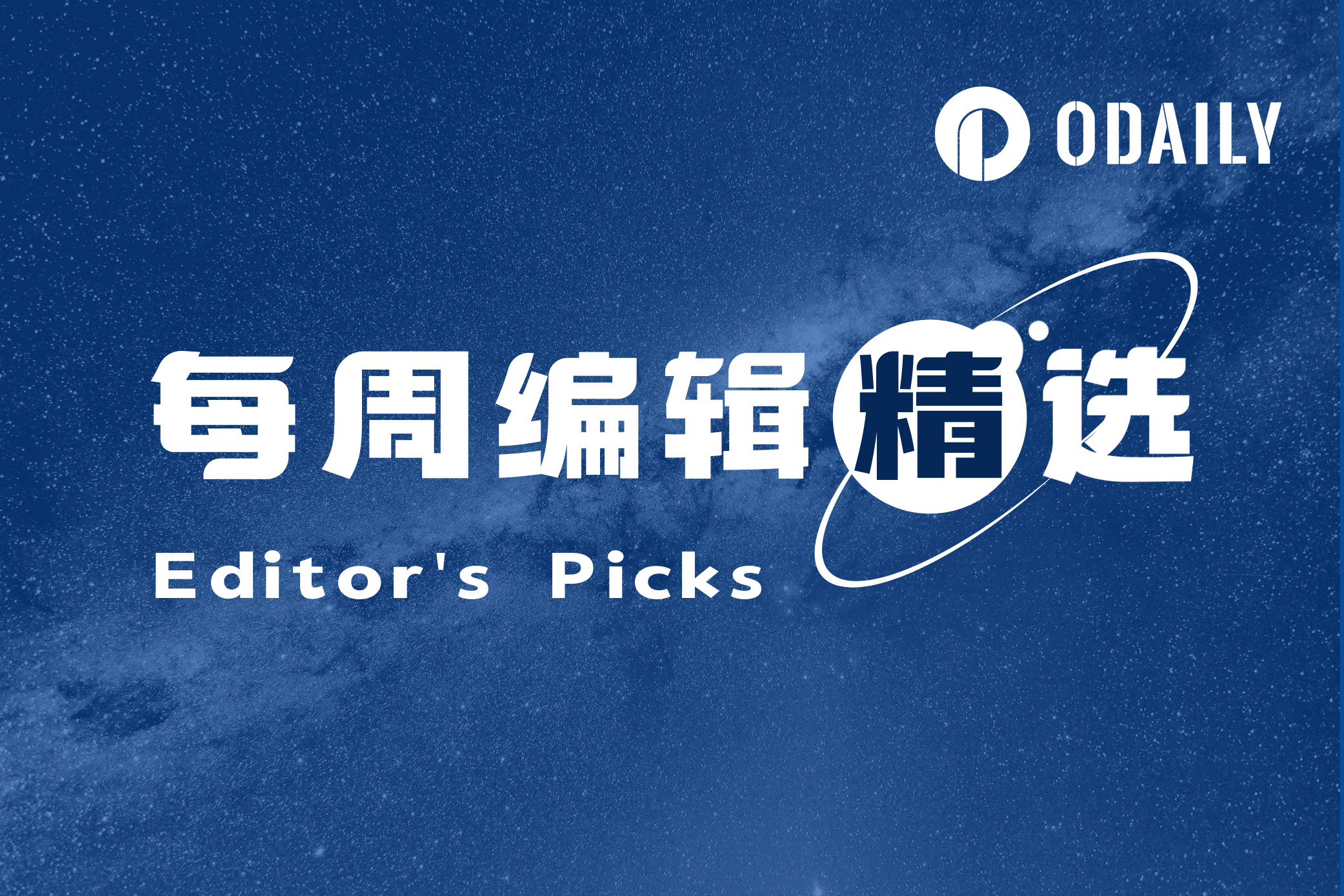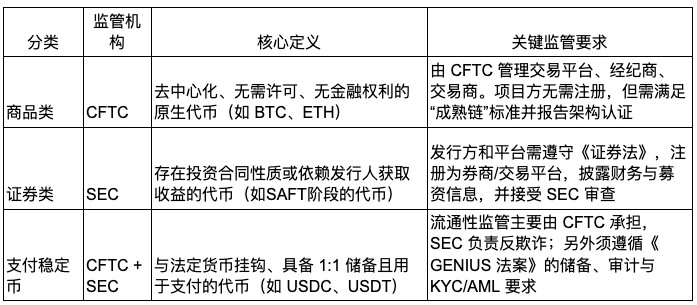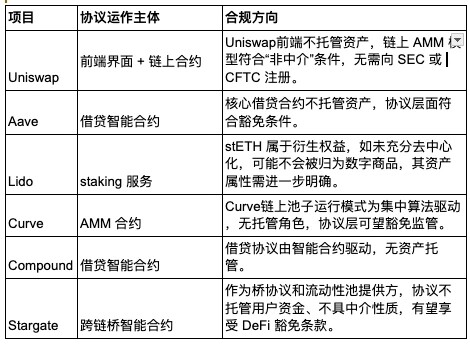"Weekly Editor's Picks" is a "functional" column of Odaily Planet Daily. Based on the extensive coverage of real-time information each week, the Planet Daily also publishes many high-quality in-depth analysis pieces, but they may be hidden among the information flow and trending news, passing you by.
Therefore, our editorial team will select some quality articles worth spending time reading and saving from the content published in the past 7 days every Saturday, providing you with new insights from the perspectives of data analysis, industry judgment, and opinion output, as you navigate the crypto world.
Now, let's read together:

Investment and Entrepreneurship
Replaying 1929: The Historical Cycle of Bitcoin Treasury Companies and Investment Trusts
The investment trust frenzy of the 1920s provides a general blueprint for understanding the financial bubbles built on leverage, reflexivity, and the magic of premium/net asset value growth. Initial financial innovations quickly evolved into speculative tools, promising easy wealth through financial alchemy. When the music stopped, the reflexive mechanisms that had pushed prices to euphoric heights accelerated their catastrophic decline.
This bears a striking resemblance to today's Bitcoin treasury companies—from the surge of new entity companies to reliance on asset net value premiums, and the use of long-term debt to amplify returns.
Deconstructing the HYPE Valuation Landscape: What Supports Hyperliquid's $10 Billion Valuation?
The price-to-earnings ratio (P/E) calculated based on 7 days of data is as follows: the P/E based on circulation is approximately 12.3 times, while the P/E based on adjusted fully diluted supply is about 21.9 times. The most reasonable valuation benchmark should lie between these two, which can be referred to as the blended P/E multiple, approximately 17.1 times.
Perpetual contracts are one of the largest markets in the crypto space, second only to stablecoins. Currently, Hyperliquid accounts for about 10% of the perpetual contract market, and an even lower share in the spot CLOB (Central Limit Order Book) market.
HYPE has not yet been widely discovered in traditional finance circles, simply because the team has not engaged in any marketing. Wall Street will eventually discover HYPE.
Hyperliquid's data performance is impressive.
Key factors that will drive HYPE's growth in the next round include: front-end distribution, the establishment of fiat on-ramps, HIP-3, SONN, and more spot assets going live.
Policy
US Congress Pushes the CLARITY Act: DeFi Expected to Attract a Wave of Compliance
The CLARITY Act, along with the GENIUS Act, constructs a regulatory framework for digital assets, with the former focusing on blockchain infrastructure and asset classification, while the latter is responsible for stablecoin regulatory standards.

For DeFi projects, the new regulations clarify exemption mechanisms to protect protocol developers; they introduce self-custody rights to safeguard DeFi users' property rights.

The Power Games Behind Stablecoins
Cryptocurrency has evolved from "anarchic currency" to "institutional asset class," with "censorship-resistant currency" simultaneously possessing strong censorship capabilities.
The GENIUS Act is the most sophisticated diplomatic maneuver disguised as domestic financial regulation. Those institutions that should have been disrupted by cryptocurrency have now become the biggest beneficiaries of crypto regulation legitimization.
Standardized financial assets—bonds, funds, REITs—are the ultimate battlefield for RWA.
Hong Kong's "regulation - technology - ecology" framework has provided the industry with a reference trust framework.
B-end enterprises need to go through four layers of compliance verification: asset screening, sandbox rehearsals, license verification, and liquidity sandbox.
Also recommended: "Hong Kong Stablecoin Policy Implementation: Key Points Fully Grasped" and "Decoding the Hong Kong Monetary Authority Document: The 'Strict' and 'Active' Behind Stablecoin Regulation".
Airdrop Opportunities and Interaction Guide
Towns, which raised $46 million, is about to launch; is the airdrop likely to be 'small'?
Full Review of the 15 Projects Nominated for Binance MVB Season 10
Bitcoin Ecosystem
Bitcoin Ecosystem Recovery: Analysis of Four Core Tracks
Ethereum and Scalability
Ethereum's 10th Anniversary: Analyzing 7 Dimensions, Is the ETH Bull Run Just Beginning?
Internal fundamentals and external environments resonate: core indicators are improving, continuous technological upgrades, and optimized team governance make the Ethereum network more robust; at the same time, the emerging narratives of stablecoins and RWA, along with the incremental funds brought by ETFs, inject continuous upward momentum into ETH.
For this reason, an increasing number of asset management institutions and analysts hold an optimistic view of Ethereum's medium to long-term prospects, believing it is likely to challenge new heights in the coming years.
The Risk Dilemma Behind Ethereum's Treasury
The risk management of Ethereum's treasury is more complex than the Strategy model. Ethereum's treasury earns returns through staking, but this process comes with risks such as limited liquidity and smart contract security, requiring enterprises to find a balance within the constraints of capital deployment.
Also recommended: "Ethereum's 10th Anniversary: Revisiting the ETH Transition Journey, Centralization of Chips Returns", "Revealing the Two Key Figures Behind ETH's Recent Surge: Tom Lee vs. Joseph Rubin", "OKX Research Institute | Ethereum Genesis Block 10th Anniversary: The Myth of the World Computer in Progress", and "The 10-Year Itch of Ethereum: The Ideals, Dilemmas, and Breakthroughs of the World Computer".
CeFi & DeFi
The Tokenized Stock Market is Expected to Grow 2,600 Times; Who Will Benefit?
The current size of the tokenized stock market is $500 million, but if 1% of the global stocks can be tokenized, the market size could reach $13.4 trillion by 2030. This means a potential growth of 2,680 times, primarily driven by regulatory clarity and mature infrastructure by 2025.
Tokenized stocks support round-the-clock global trading and allow ownership of tokenized stocks. Its key differentiation lies in its integration with DeFi, enabling investors to use their stocks as collateral for loans and yield generation without selling them.
Unlike other RWAs that need to create demand from scratch, tokenized stocks directly tap into the $134 trillion global stock market, addressing clear pain points. The combination of existing demand and solvable pain points makes it the RWA category with the greatest potential for mass adoption.
xStocks, issued by Switzerland's Backed Finance, strictly adheres to the Swiss DLT Act. Its innovation lies in holding underlying stocks through a Liechtenstein SPV, ensuring that even if the trading platform suffers a hack, the assets remain securely isolated.
Robinhood showcases regulatory arbitrage wisdom: issued by Lithuania-registered Robinhood Europe UAB, it classifies tokens under the EU MiFID II framework as derivatives, cleverly avoiding compliance costs for securities issuance.
The fundamental difference between the two lies in the legal attributes of equity certificates versus price tracking contracts.
xStocks serves as a transparent engine empowering liquidity and ecology, providing liquidity upgrade solutions for listed companies; Robinhood, on the other hand, is a strategic springboard for control retainers, suitable for growth-oriented companies that value control to raise funds quickly.
On July 21, Ethena Labs announced a $360 million PIPE (Private Investment in Public Equity) deal with stablecoin issuer StablecoinX, which plans to list on NASDAQ under the ticker symbol "USDE" (named after Ethena's stablecoin USDe). At the same time, the Ethena Foundation launched a $260 million ENA token buyback program, attempting to stabilize the token price and boost market confidence through capital strength.
Ethena is showcasing its ambition to become a rising star in the stablecoin sector through the ENA token buyback, a growth engine based on a flywheel model, a compliance strategy for USDtb, potential gains from fee switches, and Converge's layout in the RWA track, potentially becoming a quality asset that combines innovation and stability in this market cycle.
Also recommended: "Regulatory Talks, License Acquisitions, and Alliance Formation: A Recent Overview of RWA Light Ondo's Actions".
Web3 & AI
Weekly Hot Topics Recap
In the past week, the U.S. SEC Chairman announced Project Crypto (5 Key Points Summary); the White House released a digital asset report (Five Major Conclusions and Two Uncertainties): The U.S. Treasury Will Manage U.S. BTC Reserves; the U.S. SEC approved the physical redemption mechanism for Bitcoin and Ethereum ETFs (Interpretation); the Hong Kong Stablecoin Regulation Draft officially took effect; BNB broke through $860, setting a new historical high (Interpretation);
Additionally, in terms of policy and macro markets, foreign media reported that the White House is vigorously lobbying against a stock trading ban involving the President; CBOE submitted a new proposal to simplify the listing process for crypto ETFs; the Hong Kong Monetary Authority: After the Stablecoin Regulation takes effect, a 6-month transition arrangement will be established, allowing applications for a basket of fiat-pegged stablecoins, with the first license expected to be issued early next year (Interpretation); stablecoin issuers must "identify and prevent" customers from using VPNs, and initial holders of compliant stablecoins in Hong Kong must verify their identities; the Bank of Korea established a virtual asset department to lead internal discussions on Korean Won stablecoins; analysis suggests that the “money exchange” business has not yet been affected; Vanuatu held a national resource promotion conference in Hong Kong to promote its government-owned company's application for a stablecoin license; Telegram founder Pavel Durov was questioned again in France regarding the presence of illegal content on the platform;
In terms of opinions and statements, Ray Dalio: At least 15% of the portfolio should be allocated to Bitcoin and gold; Bernstein: Optimistic about ETH, but Ethereum treasury strategy companies need to manage liquidity and risk properly; Yi Lihua: The market has completely entered a long bull phase, possibly bidding farewell to the traditional 4-year cycle; Vitalik retweeted: Ethereum has been running for 10 years without pause or maintenance; the Ethereum Foundation published "lean Ethereum," outlining the development vision for the next decade; Tyler Winklevoss: Due to "angering" JPMorgan, Gemini users' access to the bank's data is restricted (Interpretation); Solana co-founder Anatoly Yakovenko denounced meme coins and NFTs as "digital garbage"; Pudgy Penguins refuted rumors: Did not acquire OpenSea; OpenSea team members: Token airdrops will be assessed comprehensively based on user profiles; OpenSea's top historical transaction user Pranksy: Does not expect OpenSea's airdrop to succeed; Securities Times: Central banks like Bank of China and Standard Chartered are expected to be the first to be approved for Hong Kong stablecoin licenses;
In terms of institutions, large companies, and leading projects, Canaan Creative announced that it will use BTC as a long-term reserve asset; U.S. publicly listed company BTCS plans to raise $2 billion to expand its ETH reserves; SharpLink Gaming bought approximately $300 million worth of ETH and staked all of it over the weekend (source); U.S. publicly listed company CEA Industries Inc. (NASDAQ: VAPE) and 10 X Capital jointly announced the establishment of a BNB-centric crypto asset reserve treasury (Interpretation); the Ethereum 10th Anniversary Torch Commemorative NFT is open for free minting; ARK Invest partnered with SOL Strategies to provide staking services; PayPal launched "Pay with Crypto", supporting transactions with wallets like Coinbase and MetaMask; MetaMask introduced a "stablecoin earning" feature, allowing users to directly deposit stablecoins in the wallet front end to earn yields; Linea announced its token economic model (details) and native ETH yield and burn mechanism; Mill City Ventures III raised $450 million to launch the SUI treasury strategy (Interpretation); pump.fun reportedly used 100% of its income in just one day to buy back tokens, a related model that may be difficult to sustain; on July 29, USD 1 briefly depegged, hitting a low of 0.9934 USDT (Interpretation); JD.com’s JD Chain has registered JCOIN and JOYCOIN, possibly the names of its stablecoins; OKX became the first global platform to offer compliant crypto derivatives trading in the UAE; TRON Inc. plans to raise $1 billion;
In terms of data, the Bitcoin premium on Coinbase has disappeared, which may indicate a slowdown in U.S. institutional buying; Charles Schwab released the Q3 trader sentiment survey results: 43% are bullish on cryptocurrencies; a survey found that 14% of U.S. adults own cryptocurrencies, and 64% of investors believe the risks are extremely high… Well, it has been another tumultuous week.
Attached is the link to the "Weekly Editor's Picks" series.
See you next time~
免责声明:本文章仅代表作者个人观点,不代表本平台的立场和观点。本文章仅供信息分享,不构成对任何人的任何投资建议。用户与作者之间的任何争议,与本平台无关。如网页中刊载的文章或图片涉及侵权,请提供相关的权利证明和身份证明发送邮件到support@aicoin.com,本平台相关工作人员将会进行核查。




